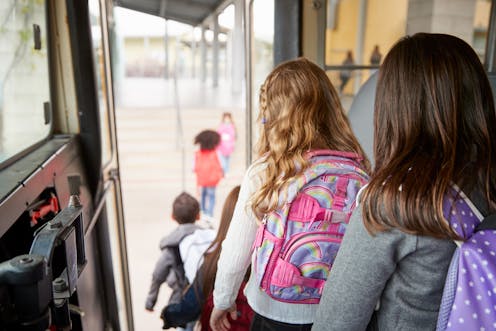Source: The Conversation (Au and NZ) – By Christina Ho, Associate professor, University of Technology Sydney

The South Australian government in recent months announced it was relaxing its catchment zone policy for secondary schools. This means families can apply for their year 6 or 7 child to attend any public high school in the state in 2022.
The change is designed to enhance choice for families, who will no longer be stuck with just the option of their local school.
So, what are school catchment zones and why were they established? Would it be better to get rid of them altogether?
A history of school zones
Australian governments created the school catchment zone policy to manage the growth of mass secondary education in the 20th century. They wanted to ensure students were offered a place at the school closest to where they lived, and regulate enrolment numbers in schools. The government established high schools from the 1950s to the 1970s to be “neighbourhood schools”.
Parents at the time were not given the option of choosing a school outside their local area.
Read more:
Choosing a school for your kid? Here’s how other Australian parents do it
But in the name of “choice”, all Australian states now allow students to apply to any public school. Although schools first need to ensure they offer a place to any student living within their catchment zone before accepting students from outside the zone.
Education is not a marketplace
We all like to have choice. But what might be ideal for the individual does not always create fair outcomes for all.
Policies to enhance school choice reflect a neoliberal ideology, dominant since the 1980s. It assumes schools and families, or “consumers”, can compete in a free and fair marketplace.
Families go “school shopping”, comparing different schools’ educational programs, facilities, NAPLAN results or student cohorts.
Easing school zoning is one policy shift that aims to increase school choice. This process arguably improves the quality of education. As with the market, schools are compelled to do better to attract more students, or “customers”.
However, schools are not a marketplace but a social service. Not all schools are equally equipped to compete, and not all families are equally equipped to choose. Australian and international research has shown policies to boost school choice exacerbate inequality and social segregation in school systems.
Read more:
Australian schools are becoming more segregated. This threatens student outcomes
Well-educated, middle-class parents have the knowledge and resources to target the best schools for their children. This includes paying for private tutoring and other extra-curricular activities, so their kids are competitive applicants in a sought-after school.

Shutterstock
These families are more able to bypass a “less desirable” local school.
Meanwhile, the “less desirable” schools start losing their better educated and well-resourced families. They may suffer declining enrolments and subsequent staffing cuts, making them even less appealing for future families.
This downward spiral makes it virtually impossible for them to compete effectively with other schools.
Australia has the fourth most segregated schooling system in the OECD. Disadvantaged students are heavily concentrated in disadvantaged and poorly performing schools, and the opposite is true of students from wealthy backgrounds.
How some parents avoid schools
In my Sydney-based research, a principal lamented that middle-class Anglo-Australian parents had expressed reluctance to send their children to her school. Because many kids from migrant and refugee families went to the school, these parents thought the academic standard would be inadequate.
Because these families repeatedly bypassed her school for other schools, schools in this area became increasingly segregated by ethnicity and socioeconomic status.
One of my parent participants recounted her observation of other parents standing outside the school gates, assessing whether the school would be too “rough” for their kids. The parent said:
They would stand outside the school, look at the kids coming out, and say, “I don’t see anyone that I want my kids to be friends with”.
Other policies around school choice
The idea of school choice isn’t just seen in school catchment zone policies. It’s also seen in governments spending more money on private schools. Or governments providing more public selective and specialist schools, such as performing arts or sports-focused schools.
For example, in NSW between 1988 and 2010, the number of public non-comprehensive secondary schools (selective and specialist schools) increased by 955% while the number of traditional comprehensive secondary schools fell by 24%.
Under the Howard government, federal funding for non-government schools tripled . According to Howard-era education minister Brendan Nelson, one of the greatest achievements of that administration was having the courage to “bring choice to education”.
With strict school zones in place, schools are more likely to reflect the full diversity of the local community. The policy allows students to mix and learn with others from different backgrounds. And it ensures more schools can benefit from the contributions of better-resourced families — from fundraising events to lobbying efforts. It is a means of putting schools on a more equal footing.
School zones may limit individual choice, but they can help create a more equitable and cohesive society.
![]()
Christina Ho receives funding from the Australian Research Council.
– ref. School catchment zones may be annoying for some parents, but they help ensure equality for everyone – https://theconversation.com/school-catchment-zones-may-be-annoying-for-some-parents-but-they-help-ensure-equality-for-everyone-160252







